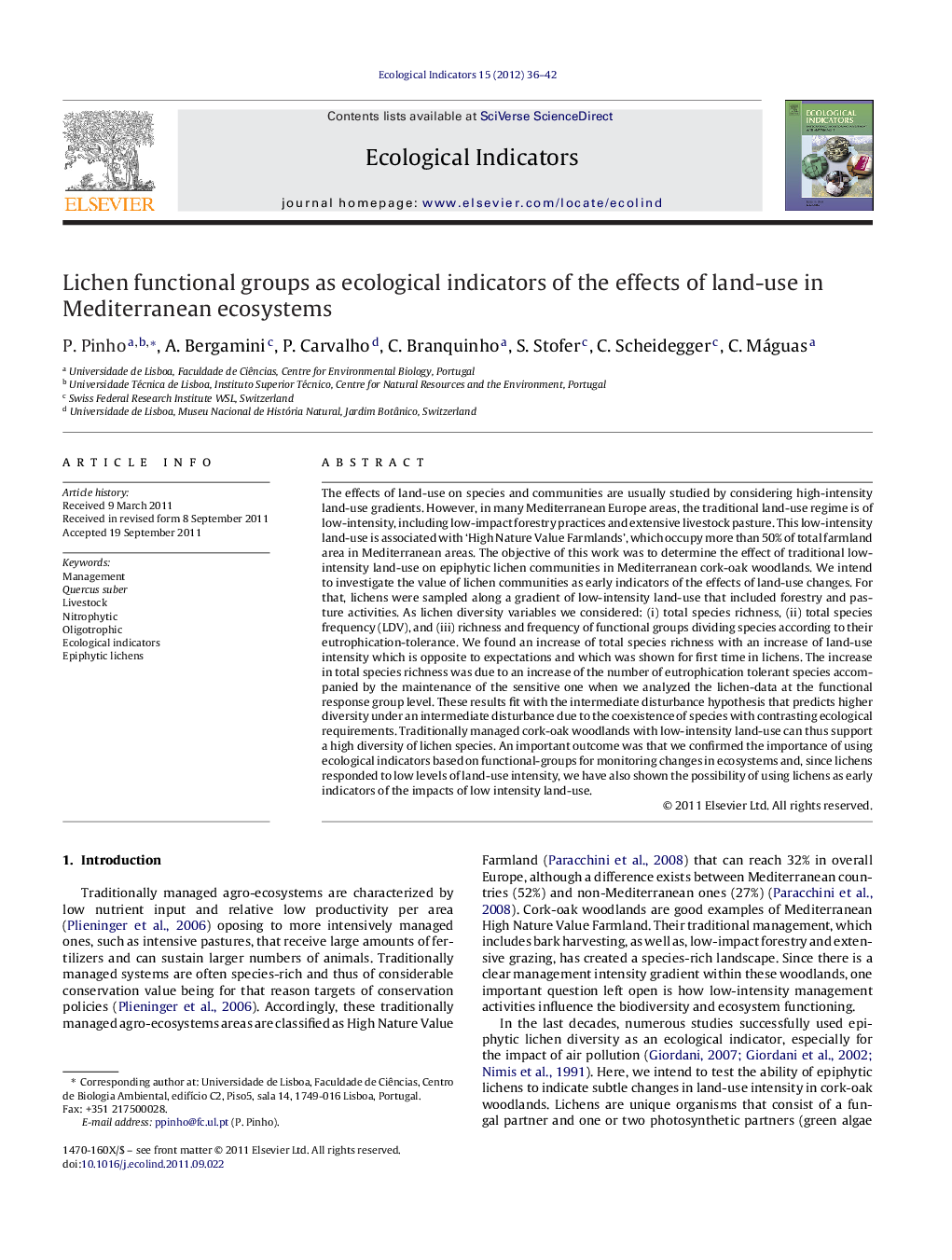| Article ID | Journal | Published Year | Pages | File Type |
|---|---|---|---|---|
| 4373911 | Ecological Indicators | 2012 | 7 Pages |
The effects of land-use on species and communities are usually studied by considering high-intensity land-use gradients. However, in many Mediterranean Europe areas, the traditional land-use regime is of low-intensity, including low-impact forestry practices and extensive livestock pasture. This low-intensity land-use is associated with ‘High Nature Value Farmlands’, which occupy more than 50% of total farmland area in Mediterranean areas. The objective of this work was to determine the effect of traditional low-intensity land-use on epiphytic lichen communities in Mediterranean cork-oak woodlands. We intend to investigate the value of lichen communities as early indicators of the effects of land-use changes. For that, lichens were sampled along a gradient of low-intensity land-use that included forestry and pasture activities. As lichen diversity variables we considered: (i) total species richness, (ii) total species frequency (LDV), and (iii) richness and frequency of functional groups dividing species according to their eutrophication-tolerance. We found an increase of total species richness with an increase of land-use intensity which is opposite to expectations and which was shown for first time in lichens. The increase in total species richness was due to an increase of the number of eutrophication tolerant species accompanied by the maintenance of the sensitive one when we analyzed the lichen-data at the functional response group level. These results fit with the intermediate disturbance hypothesis that predicts higher diversity under an intermediate disturbance due to the coexistence of species with contrasting ecological requirements. Traditionally managed cork-oak woodlands with low-intensity land-use can thus support a high diversity of lichen species. An important outcome was that we confirmed the importance of using ecological indicators based on functional-groups for monitoring changes in ecosystems and, since lichens responded to low levels of land-use intensity, we have also shown the possibility of using lichens as early indicators of the impacts of low intensity land-use.
Graphical abstractFigure optionsDownload full-size imageDownload as PowerPoint slideHighlights► What is the effect of low-intensity land-use of Mediterranean woodlands on lichens? ► Total richness increased: tolerant species were promoted, sensitive ones maintained. ► However sensitive species were negatively influenced: their abundance decreased. ► Traditional Mediterranean woodlands land-use can sustain high lichen species richness. ► The abundance of functional groups is an indicator of the effects of low-intensity land-use.
